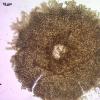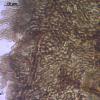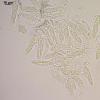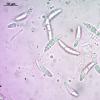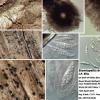
14-01-2026 10:02
Hulda Caroline HolteHello, These ascomycetes were growing on standing

13-01-2026 10:13
 Danny Newman
Danny Newman
Cordieritidaceae sp. on indet. wood w/ Hypoxylon s

13-01-2026 07:57
 Danny Newman
Danny Newman
cf. Bombardia on indet. decorticate woodAppalachia

14-01-2026 07:28
 Danny Newman
Danny Newman
Nemania sp. on indet. decorticate woodAppalachian

12-01-2026 22:02
Ethan CrensonHello all, I am hoping someone will have some ins

11-01-2026 20:35
Hello.A very tiny pyrenomycete sprouting sparsely

13-01-2026 18:55
Rees CronceStrossmayeria sp. on indet. decroticate hardwoodTh

13-01-2026 07:28
 Danny Newman
Danny Newman
Chlorociboria glauca on indet. decorticate logThe

13-01-2026 07:14
 Danny Newman
Danny Newman
Neodasyscypha cerina on indet decorticate logThe S

13-01-2026 09:10
 Danny Newman
Danny Newman
Dasyscyphella chrysotexta on indet. decorticate ha
there is some uncertainty with identification of this species.
Large spores of this specimen coincide only with one species in Stomiopeltis (S. betula) though the host differs (Luttrell, 1946; Ellis, 1977). There is a species described from Ledum (S. ledi), but it has much smaller spores (Remler, 1979). It could be possible to consider S. versicolor as well, which also was collected on Rhodod. hirsutum. But it was later transferred to Microthyrium and in "British fungi keys" mentioned with spore appendages. Therefore i inclined to S. betula. Probably you will have other suggestions?
Nina.
Thyriothecia scattered on upper leaf side (fallen leaves of Andromeda polifolia), dark brown, 150-200 mk in diameter, with visible pore.
Scutellum from irregular lobed cells, in some ascocarps (probably later in development) cells to the edge become more elongate and radially arranged; asci 37–44 x 8–10 mk; pseudoparaphyses filiform, about 1.5 mk broad; spores fusoid, with many oils, slightly heteropolar, with one weak septa, some curved, 15 (13–18) x 3.2 (2.5–3.9) mk (n=23, measurements in dead state).

I only know S. betulae on Betula on which it is very common here. My measurements are always towards the top of the range given by Pamela Ellis - see attached image. I think your measurements are too small for S. betulae - perhaps you have an undescribed taxon. Do you have any macro-images?
Cordialement
Chris
thank you for showing me S. betulae. It looks more robust, and yes, spores in my specimen are smaller. I did not make macro-photos because it is barely seen by naked eye, very scattered dots on leaves, better to use lens for them ). I will collect more material of this group to make clear picture later, now will left it under-identified.
